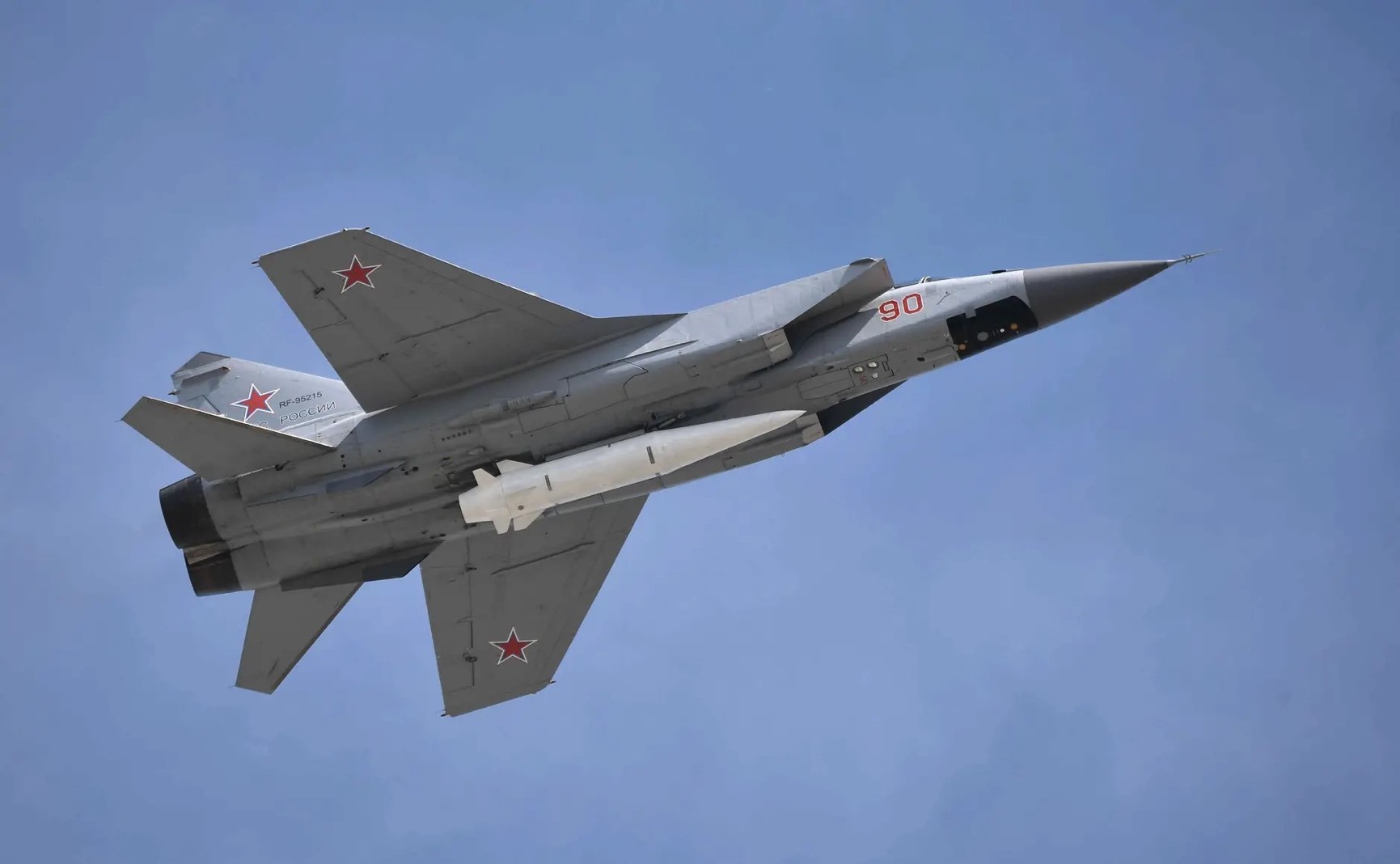Description

Disclaimer: Copyright infringement not intended.
Context
- Russia employed its AS-24 KILLJOY hypersonic missile, which the country has projected as an “invincible weapon.”
- The rocket, however, was taken down by the Ukrainian air defense system, leaving Moscow with a red face again.
Details
- The Kh-47M2, also nicknamed "Kinzhal" (Dagger), is a new Russian air-launched ballistic missile.
- Western reporting name for this weapon is AS-24 or Killjoy.
Overview of the Kh-47M2 Kinzhal Missile
- This weapon was tested and evaluated by the Russian military starting from 2017 and was first publicly revealed in 2018.
Capabilities and Deployment:
- Initially integrated with 10 MiG-31K long-range multi-role fighters in 2018 for operational use.
- Its primary role is as a long-range standoff weapon to engage significant targets, including warships like aircraft carriers, cruisers, and destroyers.

Aircraft Compatibility:
- Initially carried and launched by MiG-31K fighters and later integrated into the Tu-22M3 medium-range bomber.
- Planned integration onto the Su-57 stealthy multi-role fighters.
Performance and Range:
- Reported maximum range of up to 2,000 km, significantly extending the reach of Russian multi-role fighters compared to previous air-to-ground missiles.
- Allegedly travels at Mach 10 (around 12,000 km/h) and takes approximately 10 minutes to reach maximum range, though claims about its speed have faced skepticism.
Warhead and Features:
- Capable of carrying conventional high explosive or a low-yield nuclear warhead weighing 500 kg.
- Utilizes maneuverability and hypersonic speed to counteract hostile air defense systems, making interception difficult.
Accuracy and Guidance:
- Likely equipped with modern guidance systems with satellite navigation, providing high accuracy with a Circular Error Probable (CEP) of around 10-20 meters.
- Reports suggest it employs an optical homing system for increased terminal-stage accuracy.
Operational Use and Countermeasures:
- Initially employed in the Russian invasion of Ukraine from 2022, with some reported engagements in May 2023.
- Ukrainian Patriot anti-ballistic missile systems allegedly intercepted most, if not all, Kinzhal missiles used after 2023, leading to skepticism and issues for the Russian developers.
.jpg)
Hype and Realities of Hypersonic Missiles
- Defining Hypersonic Missiles:
- Hypersonic missiles move faster than five times the speed of sound, making them incredibly difficult to intercept due to their high speed and unpredictable trajectory.
- Plasma Cloud and Stealth Features:
- Hypersonic missiles, including the Kinzhal, produce a plasma cloud during flight, making them undetectable to radars and enhancing their survivability.
- Their speed and trajectory make them difficult to track and intercept by missile defense systems.
- US and Global Hypersonic Efforts:
- The US is actively developing hypersonic weapons but emphasizes their use for conventional warheads, unlike reports of other nations deploying nuclear-capable systems.
- Debate continues regarding the actual game-changing capabilities and survivability of hypersonic weapons in military contexts.
- Complexities and Countermeasures:
- The efficacy of hypersonic weapons, their maneuverability, and survivability are being debated amidst ongoing global developments.
- Efforts are underway to counter hypersonic threats, such as the US Navy’s Conventional Prompt Strike program and the Glide Phase Interceptor (GPI) development to counteract hypersonic missiles.
|
PRACTICE QUESTION
Q. Elaborate on the global perspectives and ongoing efforts in the development and deployment of hypersonic missile systems. (250 Words)
|










